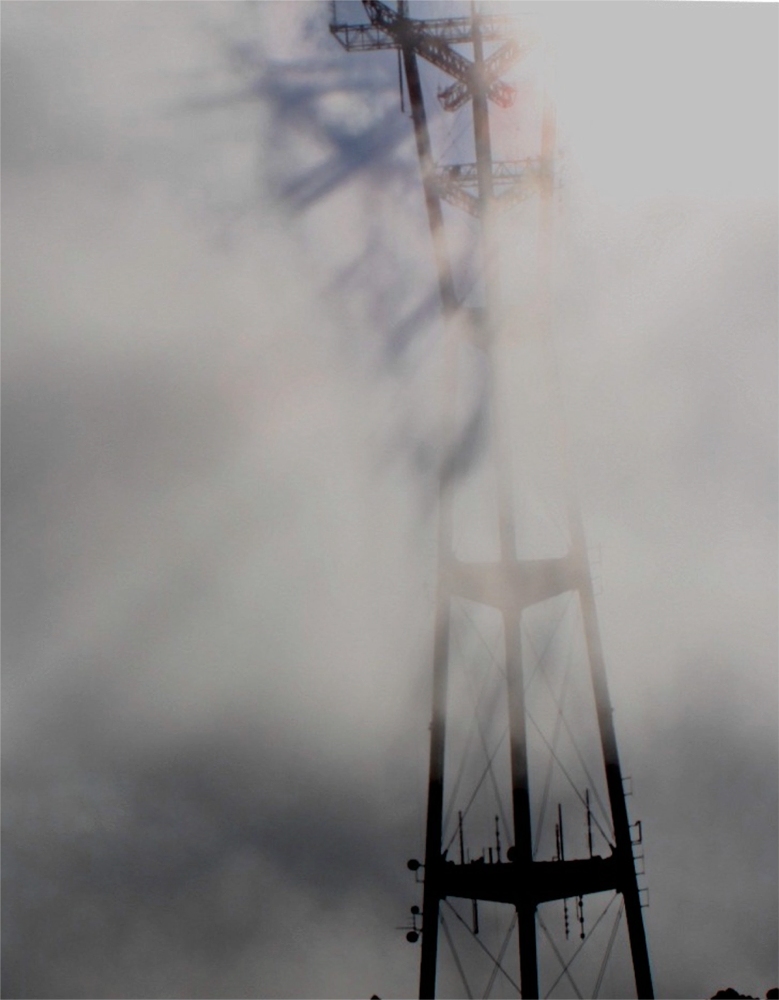
There is a 25m metallic tower located on the summit of Mt. Gäbris (1241m). Three webcams are fixed on top of the tower, looking in different directions. One of these cameras shows a part of the tower, a metallic extension arm, in the outermost right corner of the image. St. Elmos's fire became visible at this extension arm.
The St. Elmo's fire developed during a snow thunderstorm. Only one lightning strike occurred during this storm. The strike is visible on the webcam images at 18:55 CET as a sudden flare of the image and was heard by the author, who lives 2km away from the summit. The lightning strike was not close to the tower, because the flare was not very bright. The cameras operate with a special software that is able to capture all bright objects on the night sky, even if the duration is only a fraction of a second (lightning, meteors).
 The St. Elmo's fire was first visible on the webcam images at 18:05 CET and lasted about two minutes. The second and most intense appearance occurred between 18:40 and 18:50 CET, followed by the lightning strike at 18:55. During the 10 minute interval between 18:40 and 18:50 CET the weather station, which is also located on top of the tower, measured a wind gust of 75 m/s (270 km/h). This is obviously not a real wind speed. More likely it is an interference of the high voltage and the St. Elmo's fire to the anemometer. The ultrasonic anemometer uses sound speed to measure the wind speed ( http://thiesclima.de/usanemo.htm ).
The St. Elmo's fire was first visible on the webcam images at 18:05 CET and lasted about two minutes. The second and most intense appearance occurred between 18:40 and 18:50 CET, followed by the lightning strike at 18:55. During the 10 minute interval between 18:40 and 18:50 CET the weather station, which is also located on top of the tower, measured a wind gust of 75 m/s (270 km/h). This is obviously not a real wind speed. More likely it is an interference of the high voltage and the St. Elmo's fire to the anemometer. The ultrasonic anemometer uses sound speed to measure the wind speed ( http://thiesclima.de/usanemo.htm ).




